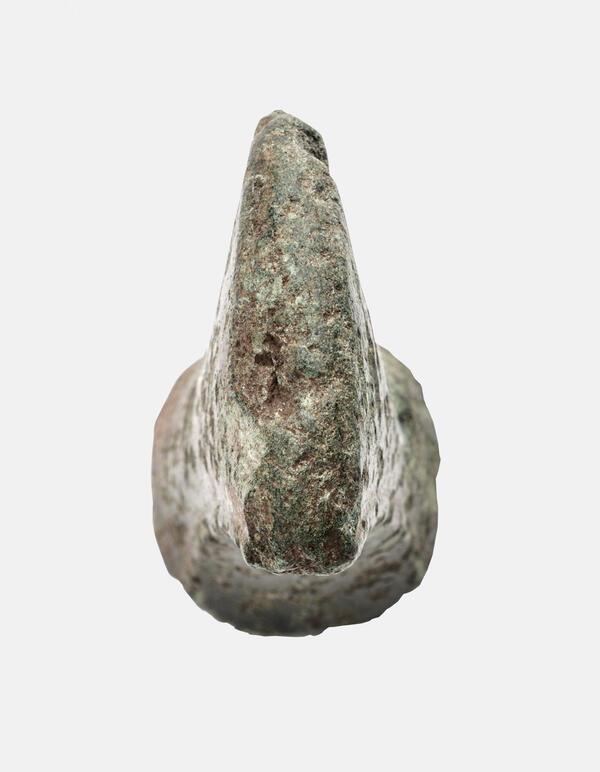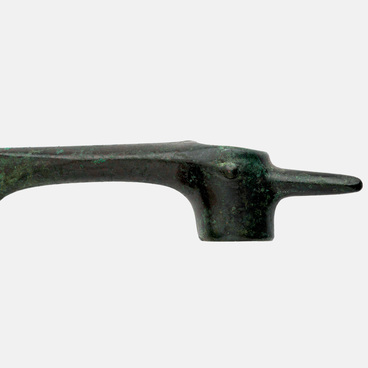The exhibition of the Chelyabinsk State Historical and Archaeological Museum-Reserve “Arkaim” presents a stone ax. It was discovered during the study of the fortified settlement Kuysak in 1994 by the expedition of the Museum-Reserve “Arkaim” led by Alexander Tairov. The Kuysak fortified settlement is located in Kizilsky district of Chelyabinsk region. The settlement was diamond-shaped in plan. It was surrounded on all sides by a defense wall, an external moat and an outer rampart. The archaeologists studied a small section of the system of moats and fortifications dating back to different times, as well as one dwelling. Among the artifacts found at the settlement there were stone polished axes, a stone mace, a mold for casting arrowheads, a horn cheek-piece blank, bronze items, and vessels decorated with geometric patterns.
The stone ritual ax displayed in the exhibition has a pickaxe-shaped, blunted blade. The blade is massive, the cross-section closer to the blade is lenticular. The back of the blade is broad with a central roll bar and rolls on the edges. The dark green color of the item has been preserved. The ax is of the Kabardino-Pyatigorsk type. The large number of finds of stone eye axes of this type in the Southern Trans-Urals and neighboring regions can be explained only by their demand in social and religious practice. The North Caucasus is considered the original area of borrowing such items, where finds of similar objects number in tens.
The common features of metal production borrowed by the Sintashta metallurgists of the Southern Urals from the North Caucasus indicate the presence of stable links between the regions in the Bronze Age. Four stone axes similar in appearance to the Kabardino-Pyatigorsk axes come from the “L” hoard of Troy II (excavated by Heinrich Schliemann), but they lack the “mushroom-shaped” tip on the butt. The bodies of axes from the hoard “L” of Troy II have relief ornamentation in the area of the eye hole, obviously imitating the metal prototype. The size of the axes, the diameter of the eyes, the material of manufacture and the thoroughness of surface treatment indicate the non-combat use of axes of the Kabardino-Pyatigorsk type. Besides, there is no confirmation of the thesis about such stone axes as a marker of the military status of the buried person in the burial sites of the Late Bronze Age of the Southern Trans-Urals and Northern Kazakhstan.




